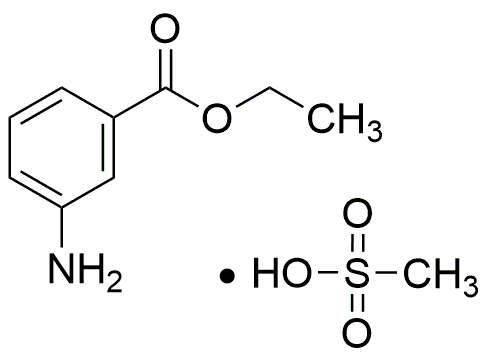Tricaine is widely utilized in research focused on
- Aquaculture: It serves as an effective anesthetic for fish during handling and transportation, minimizing stress and injury.
- Veterinary Medicine: Commonly used in veterinary practices for the sedation of aquatic animals, ensuring safe procedures during examinations or surgeries.
- Environmental Research: Employed in studies assessing the impact of pollutants on aquatic life, allowing researchers to observe fish behavior under controlled stress conditions.
- Pharmaceutical Development: Acts as a model compound in drug formulation studies, aiding in the development of new anesthetics and sedatives for various applications.
- Education and Training: Utilized in academic settings for teaching students about anesthetic protocols and fish biology, providing hands-on experience with live specimens.
General Information
Properties
Safety and Regulations
Applications
Tricaine is widely utilized in research focused on
- Aquaculture: It serves as an effective anesthetic for fish during handling and transportation, minimizing stress and injury.
- Veterinary Medicine: Commonly used in veterinary practices for the sedation of aquatic animals, ensuring safe procedures during examinations or surgeries.
- Environmental Research: Employed in studies assessing the impact of pollutants on aquatic life, allowing researchers to observe fish behavior under controlled stress conditions.
- Pharmaceutical Development: Acts as a model compound in drug formulation studies, aiding in the development of new anesthetics and sedatives for various applications.
- Education and Training: Utilized in academic settings for teaching students about anesthetic protocols and fish biology, providing hands-on experience with live specimens.
Documents
Safety Data Sheets (SDS)
The SDS provides comprehensive safety information on handling, storage, and disposal of the product.
Product Specification (PS)
The PS provides a comprehensive breakdown of the product’s properties, including chemical composition, physical state, purity, and storage requirements. It also details acceptable quality ranges and the product's intended applications.
Certificates of Analysis (COA)
Search for Certificates of Analysis (COA) by entering the products Lot Number. Lot and Batch Numbers can be found on a product’s label following the words ‘Lot’ or ‘Batch’.
Número de catálogo
Número de lote/lote
Certificates Of Origin (COO)
This COO confirms the country where the product was manufactured, and also details the materials and components used in it and whether it is derived from natural, synthetic, or other specific sources. This certificate may be required for customs, trade, and regulatory compliance.
Número de catálogo
Número de lote/lote
Safety Data Sheets (SDS)
The SDS provides comprehensive safety information on handling, storage, and disposal of the product.
DownloadProduct Specification (PS)
The PS provides a comprehensive breakdown of the product’s properties, including chemical composition, physical state, purity, and storage requirements. It also details acceptable quality ranges and the product's intended applications.
DownloadCertificates of Analysis (COA)
Search for Certificates of Analysis (COA) by entering the products Lot Number. Lot and Batch Numbers can be found on a product’s label following the words ‘Lot’ or ‘Batch’.
Número de catálogo
Número de lote/lote
Certificates Of Origin (COO)
This COO confirms the country where the product was manufactured, and also details the materials and components used in it and whether it is derived from natural, synthetic, or other specific sources. This certificate may be required for customs, trade, and regulatory compliance.


